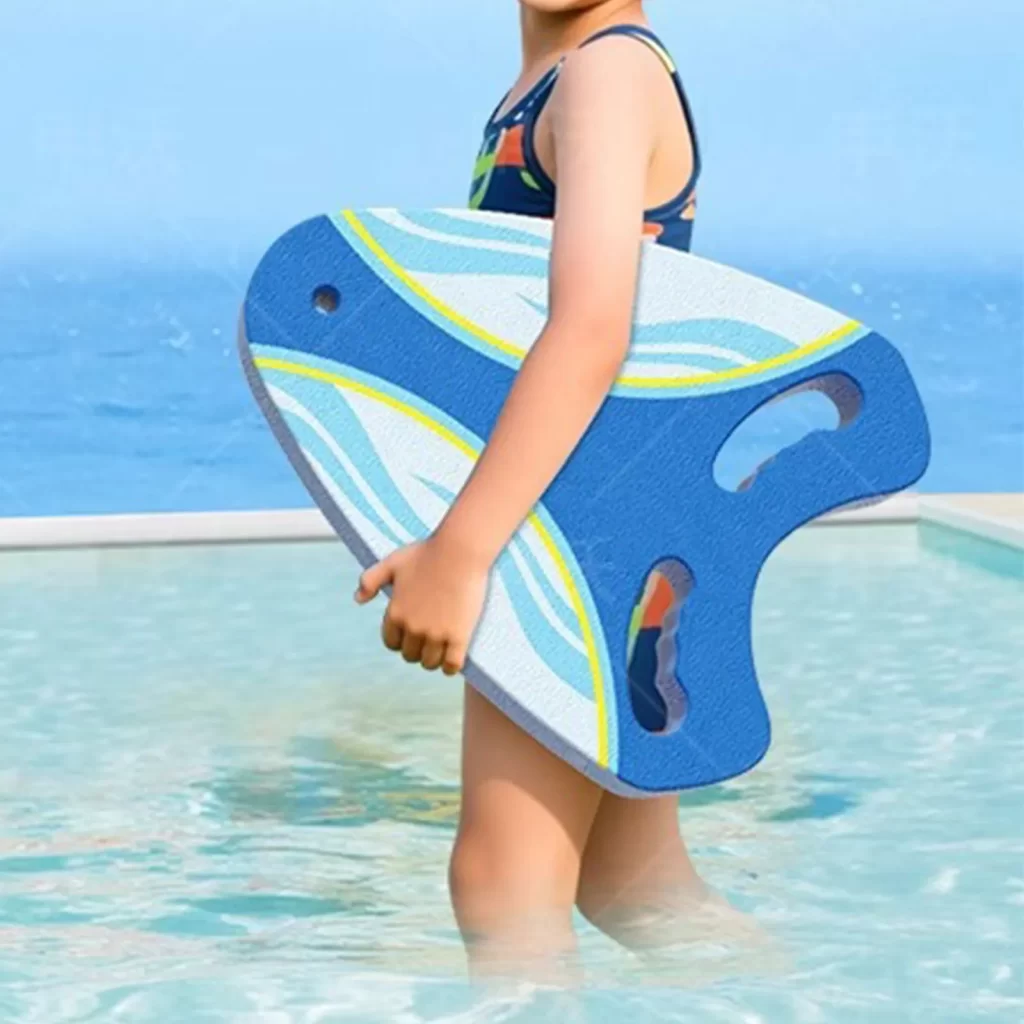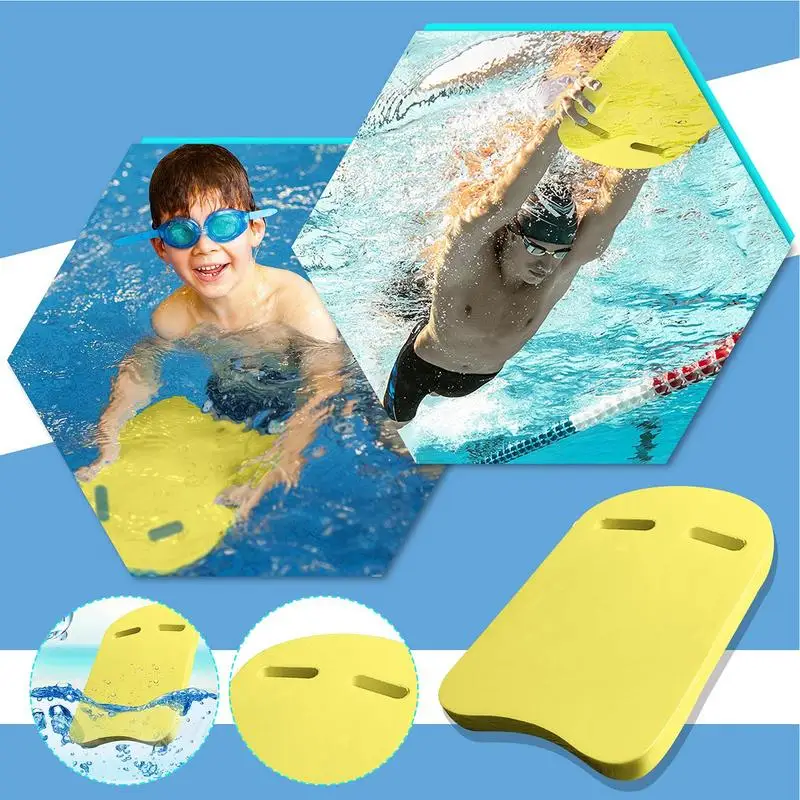Kickboard swimming is a fundamental practice in aquatic fitness and stroke development. This simple yet effective tool helps swimmers of all levels improve leg strength, body position, and endurance. Whether you’re a beginner learning the basics or an athlete training for competition, kickboard swimming plays a vital role in your routine.
Holding a kickboard allows you to isolate your lower body. You focus purely on your flutter, dolphin, or breaststroke kick without arm movement. This targeted exercise builds muscle memory and increases propulsion.
Moreover, it supports proper alignment. By keeping your head above water, you maintain a horizontal posture. This reduces drag and improves overall technique.
Swimming with a kickboard also boosts cardiovascular health. Continuous kicking raises heart rate steadily. It strengthens core muscles and enhances lung capacity.
Beginners benefit from the added buoyancy. The board provides stability. This builds confidence in deep water.
Competitive swimmers use kick sets to increase speed. Coaches often include 25- to 100-meter repeats in workouts.
Even recreational users enjoy kickboard swimming for low-impact cardio. Seniors and rehab patients find it gentle on joints.
Therefore, understanding kickboard swimming deeply enhances both performance and enjoyment.
 Why Use a Kickboard During Swim Workouts?
Why Use a Kickboard During Swim Workouts?
Using a kickboard during swim workouts offers clear advantages. First, it isolates the legs. This lets you focus on kick mechanics without distraction from arm strokes.
Second, it promotes correct body alignment. A flat, horizontal position cuts through water efficiently. Poor form creates drag and slows progress.
Third, it builds lower-body strength. Kicking engages glutes, quads, hamstrings, and calves. These muscles power every stroke.
Additionally, the buoyancy supports your upper body. You stay afloat with less effort. This allows longer training sessions.
It also helps develop rhythm. Consistent kicks create a steady tempo. This improves timing in freestyle and backstroke.
For beginners, the kickboard builds water confidence. They learn balance while practicing kicks.
Triathletes use it to strengthen legs before cycling and running. Strong kicks reduce fatigue in open water.
Coaches assign specific drills. For example, six kicks per breath teach bilateral breathing patterns.
Even advanced swimmers use it to refine technique. High-intensity kick sets build stamina.
Thus, kickboard swimming is not just for new swimmers.
It’s a versatile tool for every level.
Types of Kickboards: Choosing the Right One for Your Needs
Not all kickboards are the same. Different shapes, sizes, and materials suit various goals.
Standard rectangular boards are most common. They offer balanced buoyancy. Ideal for general kicking drills.
Compact oval boards are lighter. Perfect for younger swimmers or those with smaller frames.
D-shaped kickboards fit comfortably under the arms. They allow better hand placement. Many competitive swimmers prefer this style.
Soft EVA foam boards are gentle on the skin. Great for rehab or sensitive users. However, they absorb water over time.
Closed-cell foam resists water absorption. These boards last longer. They remain lightweight after repeated use.
Some kickboards have cutouts for hands. These reduce shoulder strain. They help maintain a streamlined position.
Textured surfaces improve grip. Sweat or chlorine won’t make them slippery.
For intense training, consider a weighted kickboard. These add resistance. They build more power in each kick.
Children may like colorful or themed designs. Fun looks encourage consistent practice.
Always check durability. Reinforced edges resist cracking.
Choosing the right kickboard ensures comfort and effectiveness.
And that makes kickboard swimming more productive.
 How to Hold a Kickboard Correctly for Maximum Efficiency
How to Hold a Kickboard Correctly for Maximum Efficiency
Proper grip is essential for effective kickboard swimming. Start by placing your hands flat on the top edge. Fingers should point forward.
Grip the sides lightly. Do not squeeze tightly. Tension in the arms defeats the purpose of isolating the legs.
Position the board just below your chest. Keep your head up and eyes forward. Avoid lifting too high. This causes hips to drop.
Keep elbows slightly bent. Locking them strains joints. Let the arms act as guides, not supports.
Submerge the bottom edge of the board slightly. This keeps it stable. Too much surface area above water creates drag.
Adjust hand width based on comfort. Some swimmers prefer narrow holds. Others spread hands wider for balance.
If using a D-shaped board, tuck your forearms inside the curve. This aligns shoulders and reduces resistance.
Avoid letting the board float too far ahead. It should stay close to your body.
Practice in shallow water first. Get used to the feel before moving deeper.
A correct hold leads to better form.
And better form means faster progress in kickboard swimming.
Common Mistakes to Avoid in Kickboard
Even experienced swimmers make errors during kickboard swimming. One major mistake is bending the knees too much. Over-bending kills momentum. Instead, keep legs mostly straight. Use ankles for flexibility.
Another issue is splashing excessively. Big, splashy kicks waste energy. Focus on small, fast movements from the hips.
Looking down disrupts balance. It causes the legs to sink. Keep your gaze forward or slightly down at the pool floor.
Holding the board too high lifts the upper body. This creates drag. Submerge the board just enough to stay afloat.
Kicking from the knees instead of the hips reduces power. Initiate motion from the core. Let the legs follow through.
Breathing improperly affects rhythm. Breathe out slowly underwater. Inhale quickly when turning the head.
Letting the toes break the surface creates drag. Point your toes and keep feet submerged.
Also, avoid rushing. Slow, controlled kicks build strength. Speed comes later.
Lastly, skipping kick sets hurts full-stroke performance. Legs drive half your forward motion.
Fixing these mistakes improves efficiency.
And that makes kickboard swimming more effective.
 Kickboard Drills to Improve Technique and Endurance
Kickboard Drills to Improve Technique and Endurance
Drills enhance the benefits of kickboard swimming. Try the flutter kick drill first. Hold the board and kick freestyle for 25 meters. Focus on quick, small motions.
Next, try the vertical kick. In deep water, tread water using only your legs. This builds strength and balance.
The six-beat kick drill pairs with breathing. Take six kicks per arm cycle. This develops timing in freestyle.
For backstroke, use the board on your back. Keep ears in the water. Rotate shoulders slightly with each kick.
Dolphin kick drills build core power. Perform underwater undulations with the board held overhead.
Breaststroke kick drills require a different grip. Hold the board with both hands in front. Isolate the whip-like leg motion.
Add interval training. Swim 4 x 50 meters with 30 seconds rest. Increase intensity gradually.
Use fins occasionally. They increase resistance and improve ankle flexibility.
Mix distances. Combine short sprints with long, steady kicks.
Track your times. Note improvements weekly.
These drills turn kickboard swimming into a powerful training method.
Benefits of Kickboard for Different Skill Levels
Kickboard swimming benefits everyone—from beginners to pros. For new swimmers, it builds water confidence. The buoyancy supports the body. This reduces fear of sinking.
Children learn coordination. They practice kicking while focusing on balance. Fun drills keep them engaged.
Adult beginners improve stroke foundation. Strong kicks support better body position. This prevents early fatigue.
For intermediate swimmers, kickboard swimming refines technique. It highlights flaws in leg motion. Corrections lead to faster lap times.
Advanced athletes use it for speed training. High-intensity kick sets boost anaerobic capacity.
Masters swimmers maintain fitness. Low-impact exercise protects joints. Yet, it still challenges the cardiovascular system.
Seniors gain mobility. Gentle kicking improves circulation and flexibility.
Rehab patients recover safely. Water supports injured limbs. Controlled movement rebuilds strength.
Even triathletes rely on it. Open water starts often begin with kicking. Strong legs give a crucial edge.
No matter your level, kickboard swimming delivers real results.
 Safety Tips for Effective and Injury-Free Kickboard
Safety Tips for Effective and Injury-Free Kickboard
Safety is key during kickboard swimming. First, warm up before starting. Light swimming or arm circles prepare muscles. Cold starts increase injury risk.
Stay in designated lanes. Avoid crowded areas. This prevents collisions with other swimmers.
Use proper form. Poor technique strains the lower back. Keep hips high and core engaged.
Limit session length. Beginners should start with 10–15 minutes. Gradually increase as strength improves.
Hydrate before and after. Even in water, you lose fluids through sweat.
Avoid overexertion. If legs cramp, stop immediately. Stretch gently in the water.
Check the kickboard for damage. Cracks or sharp edges can cause injury. Replace worn boards promptly.
Do not use in rough open water. Waves and currents make control difficult. Stick to pools or calm areas.
Supervise children at all times. Even with a kickboard, drowning risks exist.
Listen to your body. Pain is a warning sign. Rest if something feels wrong.
Following these tips ensures safe, enjoyable kickboard swimming.
Frequently Asked Questions About Kickboard
Is kickboard swimming good for weight loss?
Yes. It burns calories and builds muscle. Combine with full-stroke swimming for best results.
Can I use a kickboard with a snorkel?
Absolutely. This removes breathing distractions. Focus purely on kick form.
How often should I do kick sets?
2–3 times per week. Allow rest days for muscle recovery.
Do I need fins with a kickboard?
Not required. But they improve ankle strength and kick speed.
Can seniors use kickboards?
Yes. It’s low-impact and joint-friendly. Always consult a doctor first.
What if my legs sink?
Adjust body position. Push the board slightly underwater. Engage your core.
Are there waterproof kickboards?
All are water-resistant. Closed-cell foam doesn’t absorb water. Avoid cheap, porous materials.
Can I swim laps with a kickboard?
Yes. Many swimmers include kick sets in their lap routines.
 Final Thoughts: Why Kickboard Is Essential for Every Swimmer
Final Thoughts: Why Kickboard Is Essential for Every Swimmer
Kickboard swimming remains a cornerstone of aquatic training. It builds strength, improves form, and boosts endurance.
From beginners to elite athletes, everyone gains from regular kick sets.
Its simplicity hides its power. A single piece of foam can transform your entire stroke.
By isolating the legs, you develop propulsion, balance, and rhythm.
These skills carry over to freestyle, backstroke, and butterfly.
Moreover, it supports rehabilitation, fitness, and fun.
Few tools offer such wide-ranging benefits.
And because it’s low-cost and easy to use, access is universal.
Whether you swim for health, competition, or joy, kickboard swimming helps you improve.
So next time you enter the pool, grab a kickboard.
Focus on your kick. Refine your form. Build your power.
Because mastering kickboard swimming means mastering the foundation of great swimming.